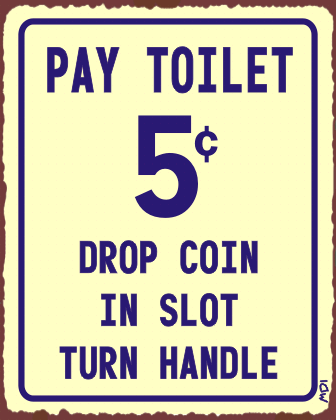 Online-video creators are sobering up after an intoxicated 2007, as they realize that the “road to riches” via online video is fraught with challenges. Business Week proclaimed “amateur video hour” as over in December. Crackle and other sites migrated from UGC (user-generated content) some time ago. And here are some quite recent data points that, alone, aren’t really newsworthy but tell a sad story together:
Online-video creators are sobering up after an intoxicated 2007, as they realize that the “road to riches” via online video is fraught with challenges. Business Week proclaimed “amateur video hour” as over in December. Crackle and other sites migrated from UGC (user-generated content) some time ago. And here are some quite recent data points that, alone, aren’t really newsworthy but tell a sad story together:
- Metacafe set a higher bar for revenue-sharing “Producer Rewards” program, much to the dismay of some creators who saw their popular videos drop from the program (see Metacafe forum).
- Revver, the pioneer of online-video revenue sharing, was sold for pennies.
- The initial participants of YouTube’s Partnership program (which shares revenue with creators) hit their one-year anniversary in March. Although YouTube and its creators are not permitted to disclose the specifics, I do have sources that reveal early participants received fixed fees that (in some cases) allowed them to quit their day jobs. The rest of us joined when YouTube had adjusted the program so that we’re paid a percentage of ad revenue, and I can’t disclose specifics. Compared to nothing, it’s welcomed cash. But it’s far from enough to live on.
For sure, some creators are doing well with sponsored gigs, DVD sales and rare television contracts. I’ve managed to augment my income by creating sponsored videos, and have done fairly well in the past 6 months. But it’s certainly not enough to quit the day job, and I’m not patient or risky enough to hold my breath for a lucrative television contract.
Solution 1: Pay for Content?
 With few exceptions, viewers don’t yet pay for amateur content. This is especially true for early adopters of online-video, who have enjoyed free video, including amateur stuff, copyrighted material via YouTube, and free movies & music via P2P sharing. As the mainstream audience moves in, the market for paid content will increase, but mostly for professionally produced and well marketed video. Perhaps we’ll see a third-party aggregate some second-tier amateur content and develop a paid subscription model (especially if that content can be fed into PC, mobile and television). However an individual amateur would inarguably lose the vast majority of their audience if they required the audience to even move to an alternative channel (their own ad-supported site) or charged for it. Even Howard Stern lost most of his audience when he moved to Syrius. So it’s no surprise that I’ve sold only four copies of the “Best of Nalts” DVD.
With few exceptions, viewers don’t yet pay for amateur content. This is especially true for early adopters of online-video, who have enjoyed free video, including amateur stuff, copyrighted material via YouTube, and free movies & music via P2P sharing. As the mainstream audience moves in, the market for paid content will increase, but mostly for professionally produced and well marketed video. Perhaps we’ll see a third-party aggregate some second-tier amateur content and develop a paid subscription model (especially if that content can be fed into PC, mobile and television). However an individual amateur would inarguably lose the vast majority of their audience if they required the audience to even move to an alternative channel (their own ad-supported site) or charged for it. Even Howard Stern lost most of his audience when he moved to Syrius. So it’s no surprise that I’ve sold only four copies of the “Best of Nalts” DVD.
Solution 2: Ad-Supported Content
 As much hype as we’ve seen about consumers avoiding ads, this is the most viable, sustainable model. Simply put, good content won’t sustain for free, and amateur content hasn’t a prayer unless it’s supported by ads. Currently, this model is rate-limited by two sad realities. First, advertisers have been slow to buy ads around amateur content — even YouTube doesn’t appear to be selling its full inventory of InVid (overlay) ads. Secondly, there’s not yet broad enough distribution of this content.
As much hype as we’ve seen about consumers avoiding ads, this is the most viable, sustainable model. Simply put, good content won’t sustain for free, and amateur content hasn’t a prayer unless it’s supported by ads. Currently, this model is rate-limited by two sad realities. First, advertisers have been slow to buy ads around amateur content — even YouTube doesn’t appear to be selling its full inventory of InVid (overlay) ads. Secondly, there’s not yet broad enough distribution of this content.
I’ll argue that good video content and consumer demand exists, but people there aren’t yet enough viewers of amateur content to warrant significant dollars from advertisers. And we’re in dire need of an easy vehicle to view UCG via our mobile and television boxes, which will increase both viewer demand and advertising inventory (my next post will explore web/TV devices, which I believe are the lynch pin here).
![]() that is asymptotic to given curve
that is asymptotic to given curve ![]() is called the asymptote of
is called the asymptote of ![]() .
.




